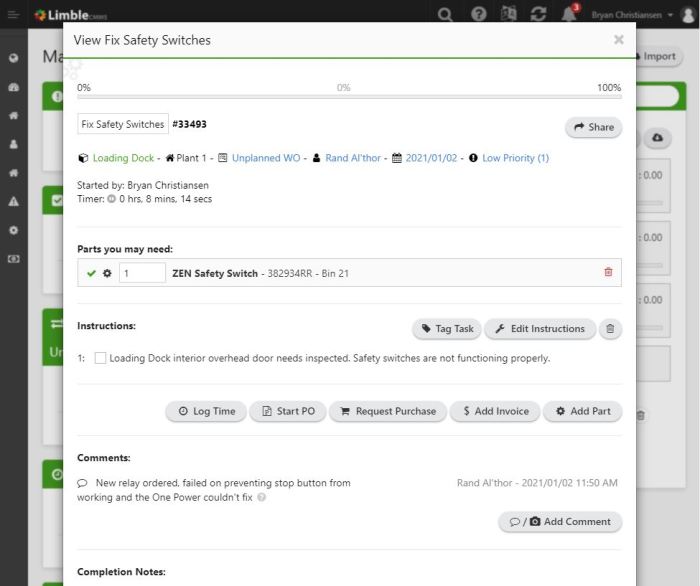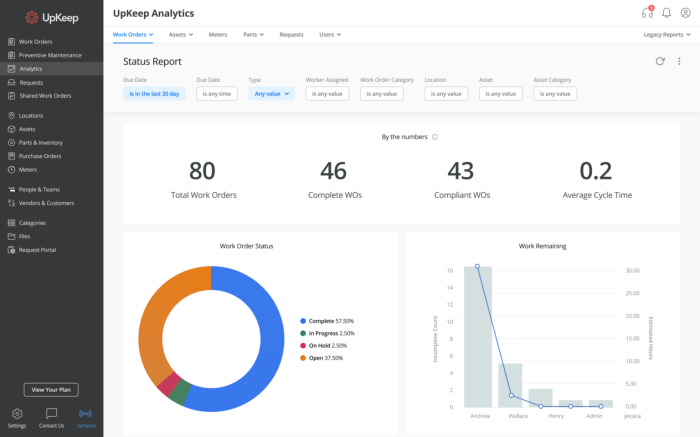In today’s fast-paced business environment, efficient management of service requests is crucial for maintaining customer satisfaction and optimizing operational efficiency. Service work order software provides a robust solution for tracking, managing, and completing service requests, ultimately leading to improved productivity and profitability. This comprehensive guide delves into the various facets of service work order software, exploring its functionalities, benefits, and how it can revolutionize your service operations.
Understanding Service Work Orders and Their Importance
A service work order is a document that details a service request, including the task to be performed, materials needed, estimated time, and assigned personnel. These orders form the backbone of any service-oriented business, from maintenance and repair to customer support and project management. Effective work order management systems ensure that requests are handled systematically, reducing delays, minimizing errors, and maximizing resource utilization.
This leads to improved customer satisfaction, enhanced employee productivity, and a more organized workflow. Efficient service work order software systems streamline this process, providing a centralized platform for managing all aspects of the service lifecycle.

Source: limblecmms.com
Key Features of Robust Service Work Order Software
- Request Tracking and Management: The software should allow for easy creation, assignment, and tracking of service requests from initial submission to completion. This includes features for prioritizing requests, setting deadlines, and notifying relevant personnel.
- Detailed Task Management: The software should facilitate the detailed outlining of tasks involved in each service request. This includes material requirements, labor estimations, and specific instructions.
- Inventory Management Integration: Integration with inventory management systems is crucial to ensure that the necessary parts and materials are readily available to complete the work orders efficiently.
- Scheduling and Resource Allocation: The software should allow for scheduling of work orders and allocation of resources (personnel, equipment) to optimize workforce utilization and project timelines.
- Communication and Collaboration Tools: Effective communication between technicians, customers, and management is essential. The software should facilitate seamless communication through notifications, messaging, and shared document access.
- Reporting and Analytics: Generating comprehensive reports on service performance, costs, and customer satisfaction is vital for continuous improvement. The software should provide insightful data visualization to support decision-making.
- Mobile Accessibility: In today’s mobile-first world, technicians need the ability to access and update work orders from any location. Mobile-friendly software solutions enhance field service efficiency.
Benefits of Implementing Service Work Order Software
Implementing service work order software brings numerous benefits, including:
- Improved Efficiency: Streamlined workflows and automated tasks significantly improve overall efficiency.
- Reduced Costs: Optimized resource allocation, minimized errors, and faster turnaround times lead to reduced operational costs.
- Enhanced Customer Satisfaction: Faster response times, accurate service delivery, and improved communication contribute to higher customer satisfaction.
- Increased Productivity: By eliminating manual processes and automating tasks, service work order software boosts employee productivity.
- Better Data Management: Centralized data storage and reporting features provide a comprehensive view of service operations.
Choosing the Right Service Work Order Software
Selecting the right software is crucial for maximizing its benefits. Consider factors like scalability, integration capabilities, pricing, and user-friendliness. Thorough research and evaluation are essential to ensure the chosen solution meets your specific needs and budget. Don’t underestimate the importance of a free trial or demo to experience the software firsthand.
Specific Use Cases and Industries
Service work order software is applicable to a wide range of industries, including:
- Utilities: Efficiently managing maintenance requests for electricity, water, and gas infrastructure.
- HVAC: Tracking and scheduling HVAC maintenance and repair work orders.
- IT Support: Managing and resolving computer and network issues for clients.
- Facilities Management: Handling building maintenance, repairs, and service requests.
Frequently Asked Questions (FAQ)
- Q: How much does service work order software cost?
A: Pricing varies significantly based on the software’s features, functionalities, and the number of users. Contact vendors directly for detailed pricing information.
- Q: What are the different types of service work order software?
A: Various software solutions cater to different needs, ranging from basic task management tools to complex enterprise-level systems.
- Q: How long does it take to implement service work order software?
A: Implementation timelines depend on factors such as the complexity of the system, the level of customization required, and the resources dedicated to the project.
Sources:
[Insert credible website sources here, e.g., industry reports, software vendor websites, etc.]
Conclusion and Call to Action
Service work order software is a powerful tool for optimizing service operations, enhancing customer satisfaction, and boosting overall efficiency. By streamlining processes, automating tasks, and improving communication, this software can significantly impact your business. Ready to elevate your service operations? Contact us today for a free consultation and explore how service work order software can transform your business.
Call to Action: Schedule a free consultation to discuss how service work order software can benefit your business.
FAQs: Service Work Order Software
What types of businesses can benefit from service work order software?
Many businesses, from small repair shops to large corporations, can benefit from service work order software. Any business that handles service requests, maintenance, or repairs can streamline their processes with this software.
How does service work order software improve communication?
The software facilitates communication by centralizing information about work orders. Technicians, clients, and management have access to the same details, reducing miscommunication and improving overall coordination.
What are some key features to look for in service work order software?
Essential features include the ability to create and assign work orders, track progress, manage inventory, and generate reports. Integration with other business systems is also a valuable asset.

Source: clickup.com
Is service work order software expensive to implement?
The cost of service work order software varies depending on the features and vendor. However, the potential cost savings from increased efficiency and reduced downtime often outweigh the initial investment.